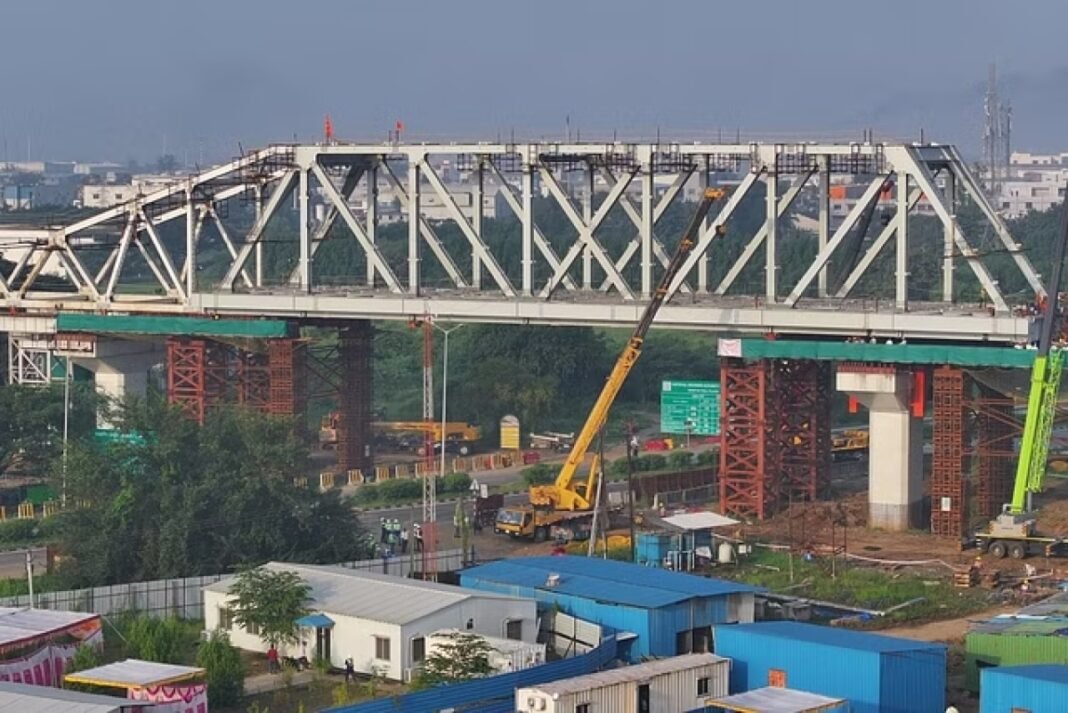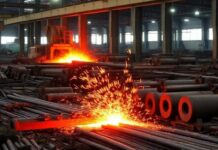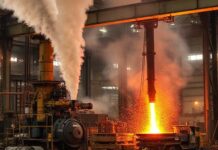India’s ambitious “Make in India” initiative is on full display with the construction of the Mumbai-Ahmedabad Bullet Train Corridor, exemplified by the recent launch of a 100-meter steel bridge over the Vadodara-Ahmedabad main line of Indian Railways near Nadiad, Gujarat. This impressive feat of engineering underscores the country’s commitment to utilizing its indigenous technical and material capabilities in tandem with Japanese expertise to create cutting-edge infrastructure.
The 1486 MT steel bridge, a testament to this collaborative effort, was fabricated in the Bhuj district of Gujarat, approximately 310 kilometers away from its installation site. Transported on trailers, the steel structure was carefully assembled at a height of 15.5 meters on temporary trestles. The meticulous planning involved in positioning the bridge involved affixing and centering the barges using winches to prevent drifting, ensuring a seamless installation process.
One of the notable aspects of this project is the advanced technology and precision involved in its execution. Each production batch of steel underwent rigorous Ultrasonic Testing (UT) at the manufacturer’s premises, ensuring the highest standards of quality. The fabrication process, including cutting, drilling, welding, and painting, adhered to the design drawings prepared by Japanese engineers, with welders and supervisors certified by International Welding Experts.
The painting technique adopted for the steel girders is first-of-its-kind in India, conforming to the C-5 Painting system of Japan Road Association’s Handbook for Corrosion Protection of Steel Road Bridges. Jointing of steel members was done using Tor Shear Type High Strength Bolts (TTHSB), a first for any railway project in India, highlighting the project’s innovative approach.
This steel bridge is the second of 28 such bridges planned for the corridor, with the first being launched across National Highway 53 in Surat, Gujarat. These steel bridges, totaling approximately 70,000 MT of specified steel, vary in length from 60 meters as “simply supported” to 230 meters as “continuous span,” showcasing India’s expertise in fabricating steel bridges for heavy haul and semi high-speed trains.
Steel bridges are particularly suitable for crossing highways, expressways, and railway lines, unlike pre-stressed concrete bridges, which are more suitable for river crossings. The implementation of this expertise on the Mumbai-Ahmedabad High-Speed Rail (MAHSR) corridor, with an operational speed of 320 kmph, demonstrates India’s commitment to advancing its rail infrastructure to meet the demands of modern transportation.





